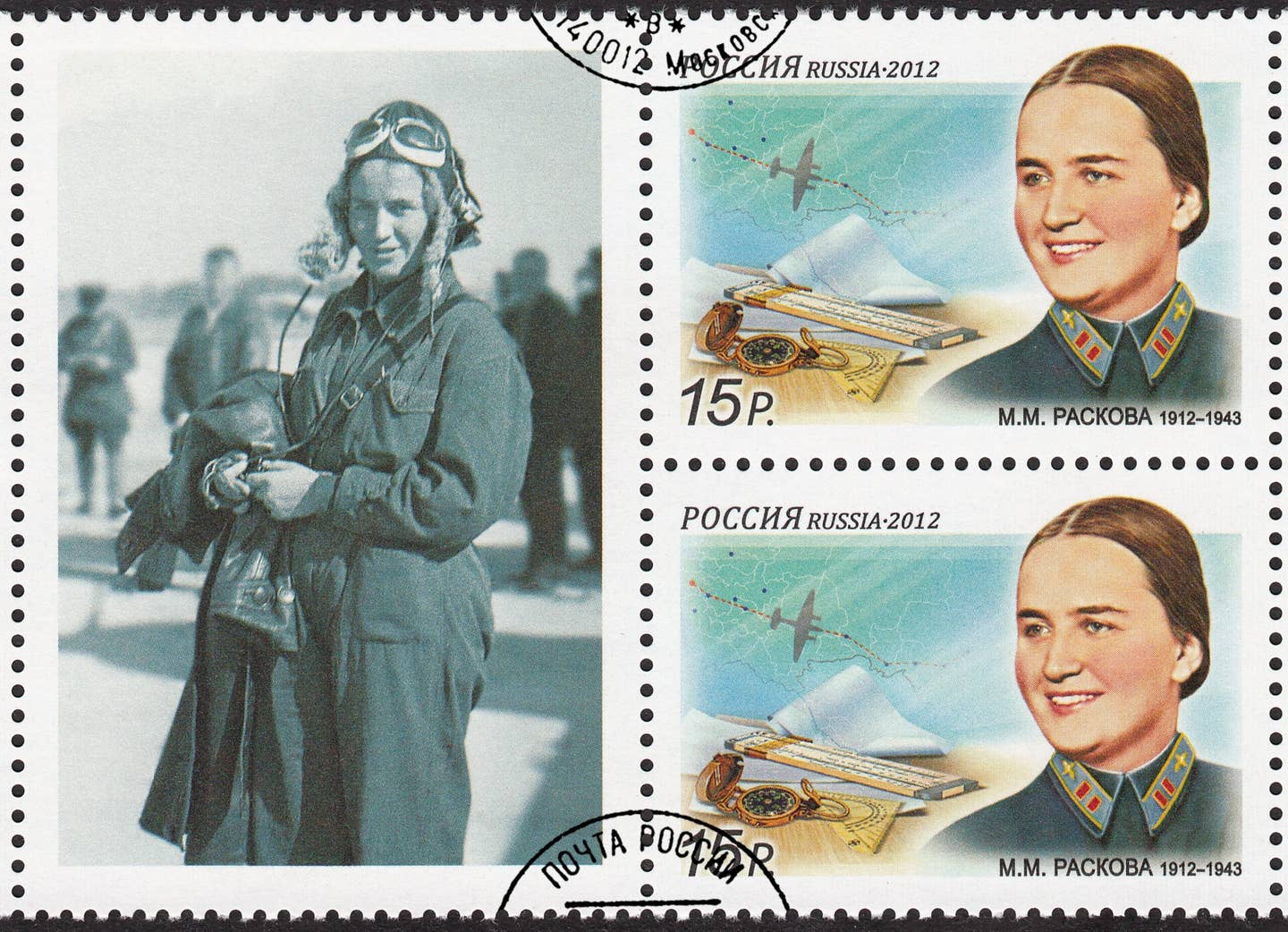Beware the Night Witches: The All-Female Pilot Crew Who Struck Fear into Nazis
During World War II, these women were believed to be “ghost” pilots.

A stamp printed by Russia which shows Marina Raskova, a Soviet pilot- and the commander of the “Night Witches.” [File Photo: Shutterstock]
Stories of heroes with almost superhuman abilities are not new aerial combat. During World War II, German soldiers on the Russian Front talked about supernatural women pilots who terrorized them on the front lines.
At the time, women were banned from combat. However, when Adolf Hitler launched the offensive against Russia, Major Marina Raskova—the first woman in the Soviet Union to earn national attention as a pilot, navigator, and aviation record-setter—approached Joseph Stalin with the suggestion of training women for aerial combat. The 588th Night Bomber Regiment, known later as the 46th “Taman" Guards Night Bomber Aviation Regiment, of the Soviet Air Force was created in October of 1941. These aerial units were made up of women in the late teens and early 20s. All were volunteers. Their mission: harassment and tactical bombing.
The women flew open cockpit Polikarpov Po-2 biplanes. The 1920s-era design was intended to be used as a crop-duster, and was never meant to be used for combat. Made from plywood and fabric, they provided little protection against the cold or the bullets the women faced. They were also severely weight restrictive as they had not been destined to carry bombs. The women flew without parachutes most of the time to save weight. They flew low and did not have radios. Navigation was done with a map, a compass, and a watch.
The personal equipment the women had wasn't much better; they flew in over-sized uniforms that had been designed for men. They stuffed cloth in the toes of the boots so they would fit.
Because the airplanes were made of wood and fabric and lacked radios, they couldn't be tracked on radar, so their appearance at night seemed sudden and supernatural. A common attack strategy was for the pilot to cut the engine and swoop down over the troops and hand-toss bombs or grenades out of the cockpit.
The Germans naturally shot at the approaching aircraft. Sometimes the women pretended their aircraft was badly damaged and would cut the engine and glide over the troops as if they were heading for a crash. The Germans would stop shooting, thinking a crash was imminent so as not to waste the ammunition. Then the pilot would restart the engine and roar away.
Eventually, one of them was shot down. When the Germans got to the wreckage and removed the helmet from the dead pilot, they saw long hair and realized the pilot was a woman. This proved unnerving to them, as in Germany the roles of women were clearly defined: to be homemakers, wives, secretaries, and mothers. The idea of women being able to fly combat was terrifying, and the soldiers determined these were not normal women. This, combined with the whooshing sound the aircraft made—similar to the sound of a broom—gave rise to the name of “die Nachthexen” or “Night Witches.”

Sign-up for newsletters & special offers!
Get the latest FLYING stories & special offers delivered directly to your inbox






